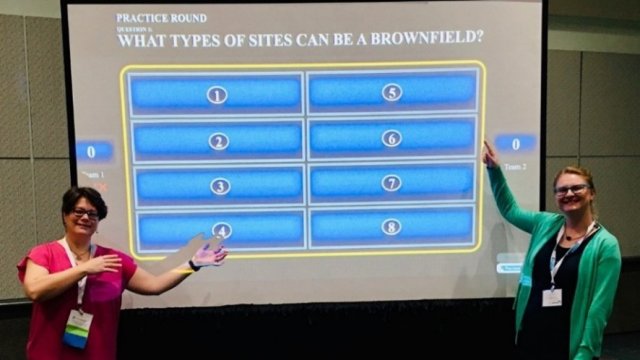Getting to Know Communities and Cultures: EPA Using Social Science to Protect Human Health and the Environment
Published June 22, 2022

Hurricanes, severe storms, and flooding impact millions of people and cause billions of dollars of damage every year. EPA researchers are using social science approaches—which involve analyzing social behavior of people—to better understand the needs of those impacted from a hurricane or severe storm and providing outreach and education that promotes community resilience following a disaster.
This effort began in 2016, when EPA held a ‘social science boot camp’ for non-social scientist researchers. Following the boot camp, a team of social science researchers led by EPA’s Keely Maxwell, a general anthropologist, met with scientists from EPA’s Homeland Security Research Program who had attended the bootcamp to discuss potential social science research related to decontamination after an accidental or intentional radiological spill or release.
Out of that conversation, Maxwell and the team decided to conduct a literature review to understand what social sciences studies and publications exist on environmental cleanups, including decontamination after a natural disaster or homeland security incident. The review identified key themes such as public participation, cleanup worker health, and evaluating societal impacts and outcomes of cleanup work.
The team also interviewed EPA cleanup practitioners to get a better understanding of their perspectives on how they go about community engagement, building trust, and fostering stakeholder relationships as part of their work.
Maxwell noted that partners were involved in many ways. “It’s a unique project in that EPA regional and program office staff have been both participants in the research and customers for the research.” As part of the project, Maxwell and the team led a session at the 2019 National Brownfields Training conference in which participants discussed how to address cultural considerations in brownfields work.
This project involving engagement and understanding impacted communities through social science is on-going, and the team is currently using a participatory design approach to co-develop additional products derived from their research. “This approach involves doing activities with EPA program and regional staff to make sure that what we create meets their specific needs,” said Maxwell.
In the fall of 2021, Maxwell and the team published a report entitled, “How to Get to Know Communities and Cultures: Methods for Remediation, Removal, and Redevelopment Projects.”
A second report is planned that will focus on community engagement and trust-building strategies with different stakeholders. EPA recognizes the importance of meaningful participation of local businesses, community residents, workers and representatives from indigenous groups, natural resource managers, urban planners, federal, state, tribal, and local government, fire and emergency responders, and other key stakeholders. The report conveys EPA’s objectives to ensure transparency, community buy-in, and more timely cleanup decisions.
The reports and additional products are designed for use by EPA or state agency staff who work on environmental remediation efforts of contaminated sites and redevelopment strategies. The project also targets remedial project managers, on-scene coordinators; and others working on cleanups of Superfund sites, brownfields and other contaminated sites (e.g., underground storage tank removal, RCRA corrective action sites).
In addressing the benefits of this project, EPA senior risk communication advisor Madeline Beal stated, “Good strategic risk communication requires not just understanding a specific risk analytically, but also understanding our audiences, both internal and external, and how they perceive different aspects of risk relevant to the work we do. This project improves our strategic thinking around a variety of different types of EPA cleanup activities.”
The efforts of this research project highlight the central importance of community engagement and building relationships among stakeholders during cleanup. The work provides a social scientific rationale for why and how to get to know communities, cultures, and affected populations near contaminated or potentially contaminated sites. “It places the excellent work EPA staff are already doing, and the resources the agency already offers, into a framework that supports ongoing cultural learning, said Maxwell.
“Ultimately, our hope is that this research helps cleanup practitioners bridge cultural differences,” she continued. “Doing so, we believe, fosters successful (societal and environmental outcomes of cleanups, especially for communities that have been disproportionately impacted by socioeconomic inequalities, political marginalization, and systemic racism.”
Learn more
